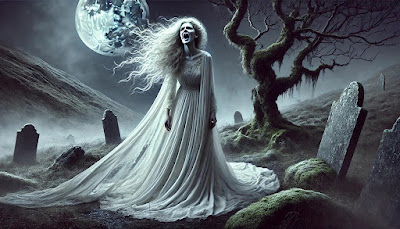Have you ever felt a rustling in the leaves or caught a fleeting glimpse of something out of the corner of your eye? It might just be the mischievous, magical Celtic faeries making their presence known! These enchanting beings have danced through the folklore of Ireland, Scotland, Wales, and Brittany for centuries, leaving trails of stardust and wonder behind.
The origin of Celtic faeries is as misty and mysterious as the Emerald Isle itself. Legends say they were the Tuatha Dé Danann, a divine race who lived in Ireland before the arrival of humans. When the humans came, these mystical beings retreated, slipping into the Otherworld, a magical realm parallel to our own.
Celtic faeries are said to live in a variety of whimsical homes: ancient oak trees, bubbling brooks, and enchanting fairy forts, which are circular mounds scattered across the countryside. These faerie abodes are portals to their hidden world, where time flows differently, and magic is as common as the morning dew.
Living in harmony with nature, Celtic faeries are the guardians of the wild. They flit through the forests, meadows, and streams, keeping the balance of nature intact with their magic. But don’t be fooled by their benevolent tasks; faeries are known for their playful and sometimes mischievous nature!
Celtic faeries can be kind and helpful, bestowing blessings, protection or guidance to those who respect nature and the faerie world, however their assistance often comes with conditions or a price. Cross them or disrespect their homes, and you might find yourself on the receiving end of a faerie prank, curse or forever lost!
The Celtic faerie realm is as diverse as it is enchanting, filled with a myriad of different types of faeries, each with their own unique characteristics and stories. Here are the most popular.
Leprechauns: Perhaps the most famous of all Irish folklore, these solitary faeries are known for their mischievous nature and hidden pots of gold at the end of the rainbow. They are small, bearded men clad in green coats and buckled shoes. Catching one might earn you three wishes for his freedom, but good luck with that—they're known for their cunning tricks!
Leprechauns are protected by law in an area of flora at The Sliabh Foy Loop, Carlingford, County Louth, Ireland. Jun 22, 2020, Leprechauns are protected under European law https://www.irishcentral.com/roots/leprechauns-protected-european-law
Banshees: A more eerie type, Banshees according to Irish folklore are female spirits (who died prematurely, tragically, or unjustly) are known for their mournful wail (whose cry is so piercing it can shatter glass), is said to appear as an omen heralding the death of a loved one. They are not the cause of death, just simply the messenger. They appear as pale, beautiful women with flowing hair and can be both fearsome and sorrowful.
Pookas (Púcas): These shape-shifting faeries can take on various forms of animals or even a voluptuous young woman, however more often appearing as dark horses with blazing eyes. They have been, according to Irish folklore, only appear on winter nights, even though they have been seen by paranormal investigators in the summer. Pookas are known for their wild, unpredictable behavior, sometimes bringing good fortune (helping farmers with their crops as long as they left a harvest offering or lost travelers), other times causing havoc. They are known for protecting animals.
Selkies: Hailing from the sea since the 13th century, Selkies are faeries that can transform from seals into humans. They shed their seal skins to walk on land and are often involved in tragic romantic tales where they long to return to the ocean. According to folklore, if a man falls in love with a Selkie, he must find her skin and hide it so she cannot return to sea.
Brownies: Coming from Scottish folklore as far back as the 1600, Brownies are friendly and helpful house faeries who assist with household chores in exchange for a seat next to the fireplace along with small offerings of food and milk. They are small, with wrinkled faces and tattered clothing, and because they are shy, they prefer to work unseen, usually at night. Upset the little people and they will rearrange your home in a disarray or set your livestock free and then leave for a new family.
So, next time you wander through a misty forest or stumble upon a circle of mushrooms, keep your eyes peeled and your heart open. You never know when you might encounter a Celtic faerie, ready to invite you into their magical realm—if only for a fleeting moment of enchantment. Remember to be kind as it's their home.
Until next post, go to your local library and check out a book on faeries. You may find their story to not only be an enchanted fantasy but also good morals to live by.
Stay tuned for the next post:
what is Kundalini?
Love&Light,
Angelina
#celtic #celticfolklore #irishfolklore #scottishfolklore #banshees #pookas #selkies #leprechauns #follklore #morals #TuathaDéDanann #Otherworld




